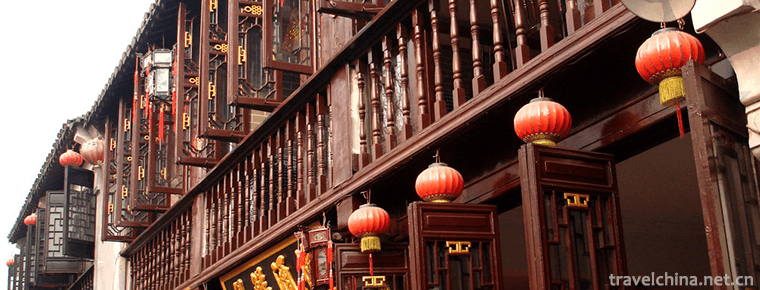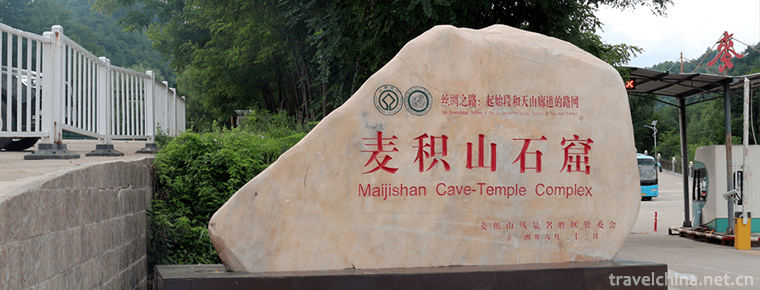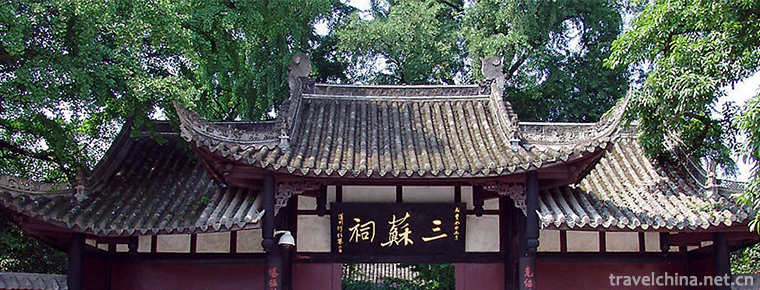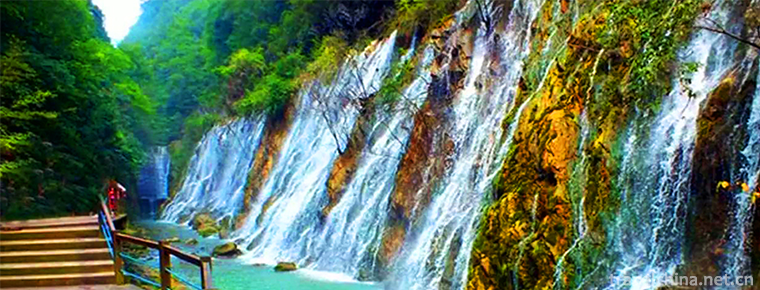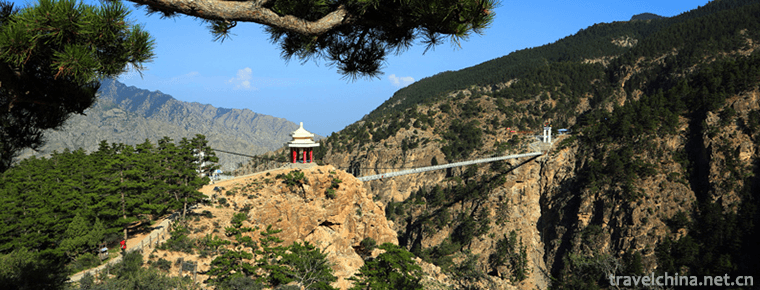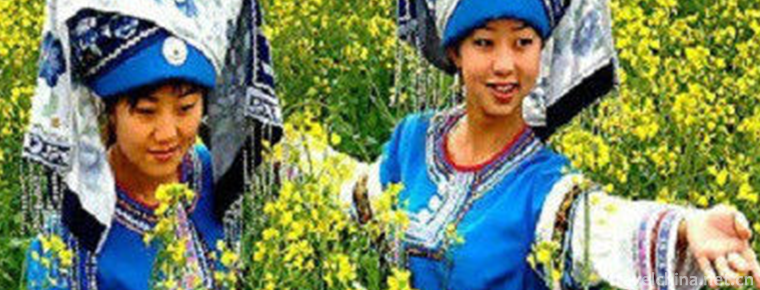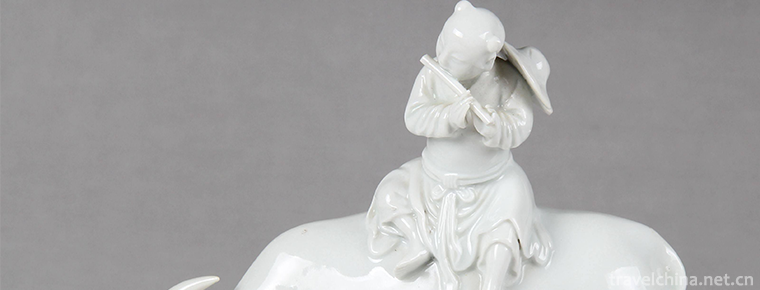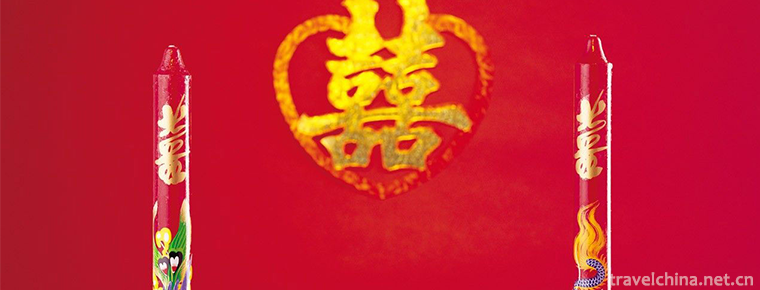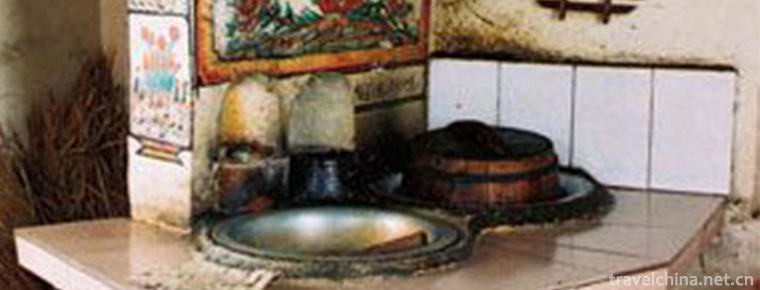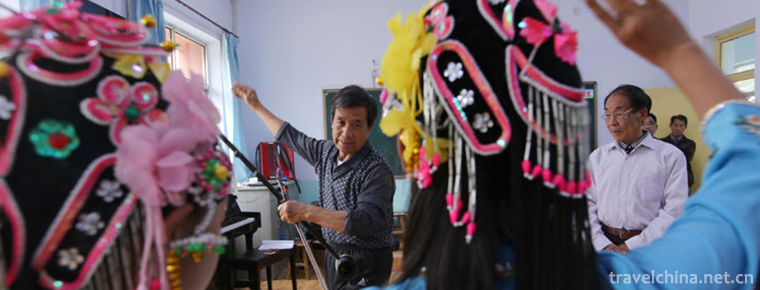Firing Techniques of Dangyangyu Twisted Tissue Porcelain
Firing Techniques of Dangyangyu Twisted Tissue Porcelain
Dangyangyu Twisted Tissue Porcelain, a special product of Dangyangyu Village, Xiuwu County, Henan Province, is a product of China's National Geographic Indicators.
Twisted porcelain, also known as "pervasive porcelains", is made of two or more different colors of porcelain mud by unique twisted manual techniques, which are intermingled to form and bake tires. Porcelain pattern is born from the embryo, which is interlinked with the outside and the inside. It can not be duplicated on one side of the embryo. It is called "woven porcelains" because it has the same characteristics in the surface and is also known as "gentleman in the porcelains".
"Dangyangyu twisted porcelain firing skills" produced in Jiaozuo Dangyangyu. In the Northern Song Dynasty, Dangyangyu and Jingdezhen, Fujian Dehua and Yaozhou in Shaanxi became the "four major ceramic capitals" of China, and it was a famous ceramics production site in the Northern Song Dynasty. The twisted porcelain with local characteristics is simple and elegant in appearance. It uses the gangue and ceramic raw materials unique to the Taihang Mountains. The pattern of twisted porcelain is pre-formed in the tire making process without decoration and carving. It is natural and natural. The finished product is of strong quality and has a clear and pleasant knocking sound. The craftsmanship of twisted porcelain is very complex, with many technological processes and strict requirements for each process. It is an extremely precious cultural heritage of China's ceramic technology.
On December 24, 2010, the former General Administration of Quality Supervision and Inspection approved the implementation of the protection of geographical indication products for Dangyangyu twisted porcelain.
Product characteristics
Dangyangyu Twisted Tire Porcelain is a kind of art that decorates porcelain by the change of decorative patterns in the womb. Compared with other ceramic varieties, its quality features are as follows: the decoration is born from the womb, the surface is the same as the inside, the inside and outside are connected, the one side of the womb can not be duplicated. The production principle is to use different tones of green mud to make mud, roll mud of different tones into plates, overlap each other, and then knead, slice, splice, fit, extrude, make moulding, then glaze firing. The pattern of twisted porcelain can be divided into natural pattern and regular pattern.
Dangyangyu Twisted Tire Porcelain uses Taihang Mountain's special gangue as raw material for making porcelain, and its production process includes soil selection, mud smelting, color mixing and mud kneading, tire making (drawing, weaving, patching, mosaic, etc.), tire repair, shade drying, grinding, glazing, roasting (wood or coal) and more than 30 processes. Porcelain pattern is born from the embryo, which connects inside and outside, penetrates inside and outside, and can not be duplicated on one side of the embryo. It is also called "woven porcelains". It is the only kind of porcelains in the world with the same appearance. Ye Zhemin, a famous expert in ancient ceramics, once appraised twisted porcelain as a "gentleman in porcelain", and because it is made of multi-color porcelain mud and rubbed together, and the finished products have different decorative patterns, it is also called "gentleman and different". The craftsmanship of Yangyu twisted-tire porcelain is very complex, and the requirements of each craftsmanship are extremely strict. Especially in the process of weaving and high-temperature firing of hand-made twisted-tire, the accuracy of various coefficients of different mud materials is emphasized, so the yield of finished products is low, which is also one of the reasons why it has great artistic value and collection value.
The characteristics of the firing techniques of Dangyangyu twisted-tire porcelain are mainly as follows: the ceramic products of combination of embryonic and pit-shaped changes; the combination of multi-color porcelain mud; the permeability and variety of decorative patterns inside and outside the porcelain, such as feathers, matting, chrysanthemum, natural patterns, etc. Dangyangyu twisted porcelain is famous in Northern Song Dynasty because of its strong toughness, crisp and melodious knocking sound and unique twisted production techniques. Dangyangyu is also known as "the land of twisted porcelain".
Habitat environment
Geographical location
Xiuwu County is located in the northwest of Henan Province, at the southern foot of the Taihang Mountains. Its geographical coordinates are 35 degrees north latitude 07'39"-35 degrees 28'32" 35 degrees, 113 degrees 08'17"-113 degrees 32'03" East longitude, Huojia County and Huixian City in Xinxiang City in the east, Wuzhu County in Jiaozuo City in the south, Jiaozuo City in the west, Jincheng City, Zezhou City and Lingchuan County in Shanxi Province in the north, 40 kilometers in the north and 40 kilometers in the west, and the narrowest in the east. The layout is irregular dumbbell. The northern part of Xiuwu County is mountainous and hilly, and the southern part is alluvial plain. The topography of the county is high in the north and low in the south. The highest elevation is 1308 meters and the lowest elevation is 77.4 meters. The average elevation of the county is 692.7 meters.
Climatic characteristics
Xiuwu County is a warm temperate continental monsoon climate, spring, summer, autumn and winter are distinct, pleasant climate. The annual average temperature is 14.5 C, the spring average temperature is 14.8 C, the summer average temperature is 26.4 C, the autumn average temperature is 15.0 C, and the winter average temperature is 1.7 C. The coldest month is January, the average temperature is 0.1 C, the hottest month is July, the average temperature is 27.2 C, the annual temperature difference is 27.1 C. The annual average precipitation is 560.4 mm. According to the distribution of precipitation, a year can be divided into dry and wet seasons, with less winter half year and more summer half year. The precipitation mainly occurs in June-August of flood season. The annual precipitation is the lowest in January, only 5.2 mm, and the highest in July, up to 154.9 mm. The annual average frost-free period is 216 days, the annual average sunshine hours are 2062.4 hours, and the light and heat resources are abundant.
Water system hydrology
Xiuwu County has abundant water resources and numerous rivers, springs and waterfalls. Plain rivers mainly include Dasha River, Dashi Waterlogging River, Xinhe River, Jianggou River and so on. Mountainous areas mainly include Shanmen River, Zhifanggou River, Qingshui River and other seasonal natural rivers. Among them, there are six rivers with a basin area of more than 100 square kilometers. In addition, there are artificial channels and rivers such as the main canal, the eastern canal, the western canal, the Sandao River and the Yellow River diversion canal. There are many waterfalls in Yuntai Mountain Scenic Spot of the World Geopark located in the northern mountainous area. The most famous waterfalls are the Yuntai Tian Waterfall, the Tianmen Waterfall with a drop of 180 meters, and the Heilongtan Waterfall with a drop of 60 meters. In addition, there is a total storage capacity of 10.38 million cubic meters of Ma'anshi Reservoir (also known as Ofang Lake). The major existing springs in Xiuwu County are Ma Fang Spring, Da Po Spring, Xiao Po Spring and Mingyue Spring. According to the survey, the average annual total water resources in Xiuwu County is 149.37 million cubic meters, of which 95.4 million cubic meters can be exploited for groundwater.
mineral resources
Xiuwu County is rich in mineral resources. The proven minerals are coal, bauxite, iron ore, refractory clay, kaolin, pyrite, limestone (limestone for water mud, limestone for flux, building stone), calcite, crystal, dolomite, Cement Burden clay, mineral water, coal bed gas, geothermal and other 20 kinds, with large reserves and good quality, mainly distributed in the northern mountainous areas. There are many large and medium-sized integrated coal mines in China, with an average annual output of 3 million tons of raw coal. The superior geographical location and abundant natural mineral resources of Xiuwu County provide a congenital material for the production and continuation of the twisted-body porcelain making techniques in Dangyangyu.
historical origin
Twisted porcelain, also known as "pervasive porcelains", is made of two or more different colors of porcelain mud by unique twisted manual techniques, which are intermingled to form and bake tires. It originated in Tang Dynasty and flourished in Song Dynasty. It has been handed down from generation to generation in Jiaozuo, Henan Province for more than 1000 years. It is mainly produced in the area of Dangyangyu kilns in Jiaozuo, so it is commonly known as "Dangyangyu twisted porcelain".
Dangyangyu Porcelain Kiln Site of the Song Dynasty has a four-year (1105) Monument to the Temple of Bailingweng in Deying Hou, which records the prosperity of Dangyangyu Kiln industry at that time. Especially Jiaozuo Dangyangyu Kiln is famous for its twisted tires, twisted glaze and flower-picking techniques, and its style is unique.
During the Northern Song Dynasty, the important kiln site in Jiaozuo Xiuwudangyangyu was evaluated as twisted-tire porcelain: "White as snow, red as Zhu, green as emerald, thin as paper, bright as mirror, voice as gorgeous, flower as brocade, condensed as fat, moist as jade." After the change of Jingkang in the Northern Song Dynasty, the firing process of twisted porcelain was abruptly terminated, and its firing process disappeared in the smoke of history. Ancient twisted-tire ceramics only have more than 60 pieces left at home and abroad, becoming a rare treasure.
In the 1930s, twisted porcelain was first known to have flowed into Beijing due to the purchase and sale of antique merchants.
In 1951 and 1962, the Palace Museum sent Chen Wanli and other experts to Dangyangyu twice for field investigation, and published two articles such as Talking about Dangyangyu Kiln. The article pointed out that "Song Porcelain north of the Yellow River is not comparable to Dangyangyu except Quyang Zhiding and Linru Zhiru."
Under the leadership of Jiaozuo City, Xiuwu County Ceramic Factory, which produces bowls and dishes, shoulders this important task. The government not only allocates funds to excavate and develop Dangyangyu twisted body porcelain, but also establishes relevant research institutes. But the good times are not long, because the market downturn does not make money, coupled with technical reasons, by the early 1980s, the project was abandoned halfway.
In 1989, Chai Zhanzhu came to the old site of Dangyangyu Porcelain Kiln to dig for debris and buy them from house to house. Based on the texture characteristics of these debris, he began to test firing.
In 2002, the firing technique of twisted porcelain was restored. The traditional craftsmanship of Dangyangyu stranded porcelain has passed provincial appraisal and won the third prize of provincial scientific and technological achievements.
Production situation
In 2014, the twisted porcelain industry in Dangyangyu began to take shape. There were three large-scale twisted porcelain manufacturers and more than 30 twisted porcelain workshops scattered around Dangyangyu.
Product honor
In 2009, the craftsmanship of Dangyangyu twisted porcelain was included in the second batch of Henan intangible cultural heritage list.
On December 24, 2010, the former General Administration of Quality Supervision and Inspection approved the implementation of the protection of geographical indication products for Dangyangyu twisted porcelain.
In 2014, Xiuwu County was awarded the title of "Capital of China Twisted Ceramics" by China Arts and Crafts Association.
In November 2014, the firing technology of Dangyangyu twisted porcelain was announced by the State Council as the fourth batch of representative projects of national intangible cultural heritage.
geographical indication
Scope of geographical protection
The protection area of Dangyangyu twisted porcelain geographical indication products is the administrative region of Dangyangyu Village in Xiuwu County, Henan Province.
Quality Technical Requirements
(1) Protecting varieties.
Planar hanger class, entity class, hollow container class, etc.
(2) Production technology.
1. Selection of raw materials:
(1) Choosing local kaolin and bentonite requires less impurities in raw materials, especially less than 0.5% iron content.
(2) Use local water sources.
2. Classification and processing of raw materials: all kinds of colored mud are formed separately and then combined with billet forming. In the process of raw material processing, besides making ceramic mud, white mud and color slurry need to be prepared. The raw material composition of white mud is the same as that of ceramic mud. The fineness of white mud is 160 mesh sieves, and the residual sieves of 250 mesh sieves are 0.1%. The content of iron and titanium impurities in white mud raw materials is less than 0.5%, titanium dioxide is less than 0.3%. The proportion of white mud is between 1.25 and 1.33 g/cubic centimeter. The color slurry is ceramic pigments. The fineness of the color paste is 160 mesh sieve passing through 250 mesh sieve, the iron and titanium impurity content in the raw material of the color paste is less than 0.3%, the titanium content is less than 0.1%, and the proportion of the color paste is between 1.12 and 1.21 g/cubic centimeter.
3. Forming steps:
(1) To make white mud and color mud, the amount of color mud added in the color mud is 2% to 40%.
(2) Processing of polychrome mud, mixing the required color mud proportionally, and mixing method according to different decoration and color requirements. After finishing the mud processing, the billet must be made within two days.
(3) Forming: pure manual billet, after the billet is finished, it is shady and dry in the rain-proof ventilation place, generally required for 4 to 5 days.
4. Repair: Inspection, repair, sculpture and processing of the fetus should be carried out immediately after the vagina is dried.
(5) Glazing: When the body is dry trimmed, the glaze paste is sprayed according to different requirements.
4. The firing temperature is 1300 to 1380 and the heating time is 8 to 10 hours. The flame is oxidized below 1000 and the flame is reduced above 1000 to the required temperature. In the firing step, the firing temperature is 1340 to 1360 C, the heating time is 8.5 to 9 hours, and the cooling time is 5 to 6 hours.
(3) Quality characteristics.
All kinds of decorations of twisted porcelain come from the embryo. The outer part is the same as the inner part. The inner part and the outer part are interlinked. One side of the twisted porcelain can not be duplicated. With twisted tire, twisted glaze, flower picking comprehensive decoration.
1. Sensory features: glaze glossy (except glassless products), pure color; complete sets of products glaze color, screen color should be basically the same; on the plane, smooth, covered product cover and the main body should basically coincide; creative works without cracking, bumping, leakage, explosion glaze defects.
2. Physical and chemical indicators:
(1) Water absorption is less than 0.5% and porosity is less than 10%. There should be no glaze crack and body crack after crack resistance test.
(2) Apparent density is more than 96%, volume density is more than 3.0 g/cubic centimeter.
(3) The leaching amount of lead is less than 0.5 mg/kg and that of cadmium is less than 0.05 mg/kg.
(4) The internal exponent must satisfy IRa < 0.5, and the external exponent must satisfy Ir < 0.8.
3. Safety requirements: Product safety indicators must meet the relevant national regulations for similar products.
Use of special logo
Producers of Dangyangyu twisted-tire porcelain products within the scope of protection origin may apply to Jiao for the use of "special geographical indication products" by the Immigration Inspection and Quarantine Bureau, which shall be examined by Henan Exit-Entry Inspection and Quarantine Bureau and approved by the announcement of the General Administration of Quality Inspection and Quarantine. The statutory inspection institution for Dangyangyu stranded porcelain is designated by Henan Entry-Exit Inspection and Quarantine Bureau.
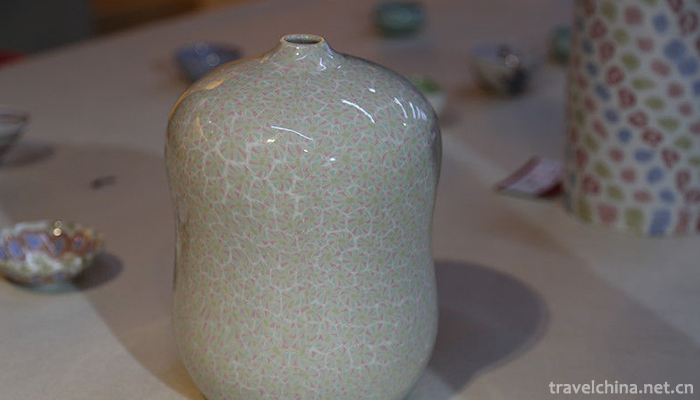
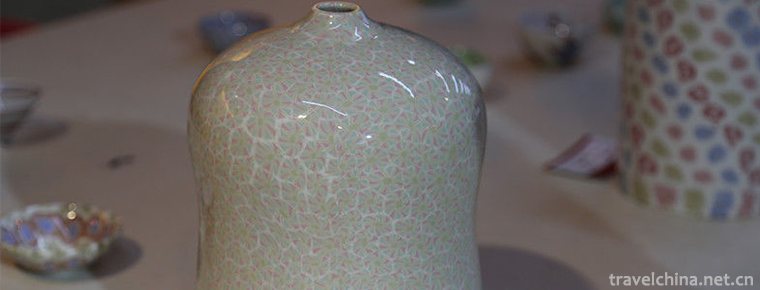
Firing Techniques of Dangyangyu Twisted Tissue Porcelain
-
Zhouzhuang Town
Zhouzhuang Ancient Town is a preferred site for world cultural heritage and the first batch of national 5A tourist attractions. It is located in the southeast of Suzhou City and at the junction of Kun
Views: 357 Time 2018-12-06 -
Maiji Mountain Scenic Spot
Maiji Mountain, located in Maiji District of Tianshui City, Gansu Province, is a lone peak of Xiaolongshan, 142 meters high, named for its resemblance to wheat stacks
Views: 155 Time 2018-12-12 -
Sansu Temple Scenic Area
Sansu Temple Scenic Area is located in the west of Meishan City, Sichuan Province. It is a national AAAA-level tourist attraction, a national key cultural relics protection unit, and a national second
Views: 119 Time 2018-12-19 -
Zhongba Grand Canyon Scenic Area
Shiquan Zhongba Grand Canyon is located in the southern side of the Hanjiang River in Shiquan County, Shaanxi Province. It is 20 kilometers away from the county town
Views: 145 Time 2018-12-22 -
suyukou national forest park
Suyukou National Forest Park is located in Helan Mountain National Nature Reserve, 50 kilometers northwest of Yinchuan City, capital of Ningxia. It is a national 4A-level tourist attraction.
Views: 182 Time 2019-02-13 -
Bouyei Pange
Bouyei Pange is a traditional folk song of the Bouyei nationality. It is a folk literary work created and sung in the original Bouyei language. Bouyei Pange is popular in Buyi villages
Views: 134 Time 2019-04-04 -
Sintering Techniques of Dehua Porcelain
Dehua ceramic firing technology is a traditional handicraft in Dehua, Fujian Province. Dehua ceramic production began in the Neolithic Age, flourished in the Tang and Song Dynasties
Views: 177 Time 2019-04-26 -
Traditional Marriage Customs of the Han Nationality
The ancestors of the Han nationality believed that dusk was auspicious, so they would marry at dusk. Therefore, the etiquette of marriage was called "dusk rite", which later evolved
Views: 237 Time 2019-05-02 -
Jiaxing Kitchen Head Painting
Jiaxing stove painting is a form of Jiaxing folk art. Folk artists use painting pigments to draw patterns on the various parts of the kitchen wall, also known as "kitchen paintings" and &quo
Views: 361 Time 2019-05-05 -
Parrot Opera
Parrot Opera, which originated in the reign of Qianlong in Qing Dynasty, inherited in Shanghe Village, Linzi District, Zibo City, Shandong Province, and is one of the national intangible cultural heri
Views: 186 Time 2019-07-25 -
Yuxian Temple
Yuxian temple was built in Tongzhi period of Qing Dynasty. There is a beautiful folklore about the name of Yuxian temple. It is said that in ancient times, a man went to Mount Emei to seek immortality.
Views: 271 Time 2020-10-15 -
Nanchong location
Nanchong City is located in the northeast of Sichuan Basin, in the middle reaches of Jialing River, between 30 ° 35 ′ N ~ 31 ° 51 ′ N and 105 ° 27 ′ ~ 106 ° 58 ′ E. With a span of 165 km from north to South and 143 km from east to west, it is adjacent to Dazhou
Views: 357 Time 2020-12-17
